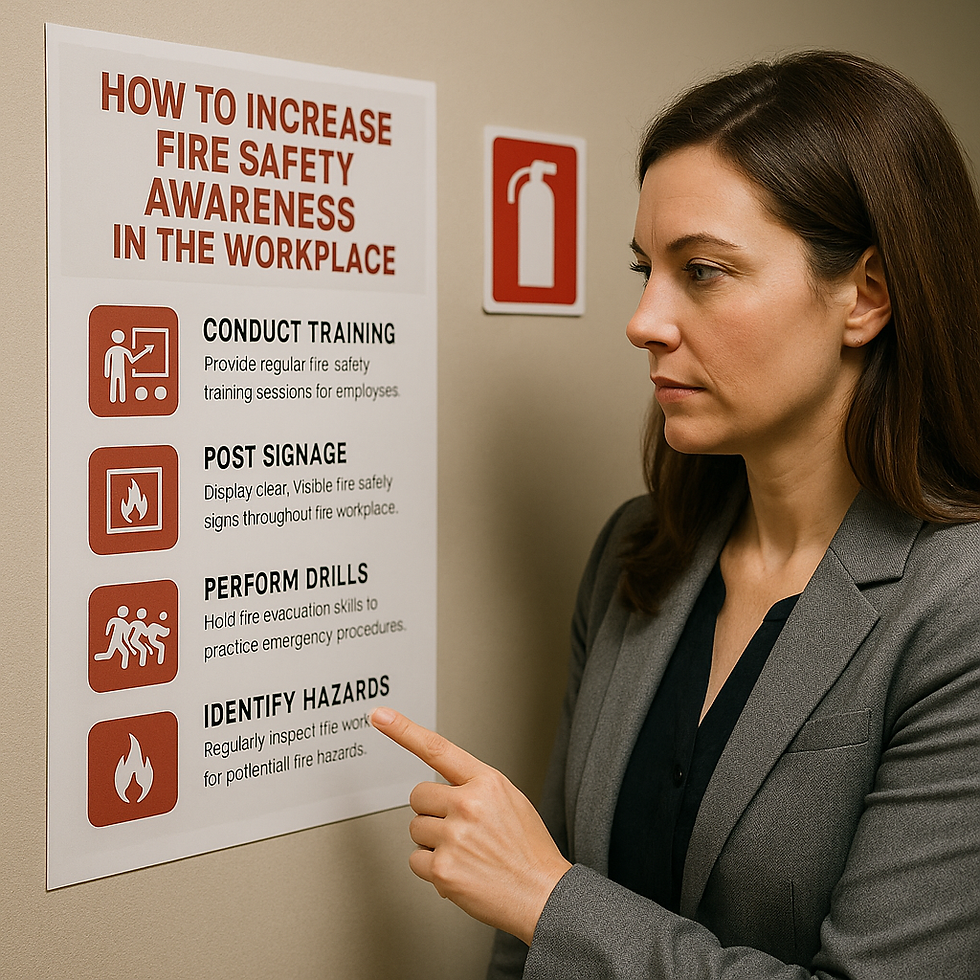How Much Impact Can a Single Billboard Have on Fire Safety Awareness
- Pavlo Lapikov

- Aug 12
- 3 min read

Most people glance at a billboard for only a few seconds before it disappears in the rearview mirror. For fire safety awareness campaigns, those seconds might be the only chance to plant a life-saving idea. But can a single billboard truly make a difference, or is it just another piece of visual noise in a world flooded with ads?
Why would a fire safety awareness billboard work at all?
Billboards work on a principle of repeated exposure. Drivers and pedestrians pass the same location multiple times, and over time the message becomes familiar. According to the Out of Home Advertising Association of America, 71% of people consciously look at roadside ads, and 56% recall the message later. In fire safety awareness, where urgency and recall can mean survival, this repetition can be powerful.
When the National Fire Code of Canada mandates that “All employees must be trained in fire safety procedures relevant to their workplace,” it indirectly points to the importance of awareness campaigns. A billboard can reinforce those training messages, reminding people daily about actions such as testing alarms or planning escape routes.
What makes a fire safety awareness billboard effective?
For a billboard to influence behavior, it must communicate in under seven words and with clear imagery. A blurred photo of smoke and flames with the text “Test Your Alarm” is more likely to stick in memory than a paragraph of safety tips.
Placement is equally important. A fire safety awareness billboard near residential neighborhoods, schools, or industrial zones is more likely to target people at risk.
Keep the headline short and bold
Use high-contrast visuals
Focus on one clear action (e.g., “Check Your Smoke Alarm”)
Place it where the target audience travels regularly
Update designs seasonally to avoid visual fatigue
Are there real-world examples of fire safety awareness billboards making an impact?
In Ontario, a 2022 campaign placed bright yellow “Plan Your Escape” billboards at busy commuter routes before Fire Prevention Week. Local fire departments reported a 19% increase in households requesting home safety inspections that month. In Australia, a rural fire safety awareness campaign urging “Clear Your Property Before Fire Season” coincided with a measurable reduction in bushfire damage in participating regions.
These examples show that when paired with broader safety initiatives, a single billboard can act as a trigger, reminding people of actions they already know they should take.
How can a fire safety awareness billboard fail to make an impact?
A poorly executed fire safety awareness billboard can fade into the background, especially if it blends with unrelated ads or uses technical language the public doesn’t connect with. If the message is vague (“Stay Safe”) without telling people what to do, the opportunity is wasted.
Messages also fail when they rely only on fear. An image of a burning house without a clear call to action may cause people to look away rather than engage.
What is the role of fire safety awareness billboards in modern public education?
In a world dominated by smartphones and social media, the billboard remains one of the few unavoidable public messages. Its value is amplified when it is part of an integrated fire safety awareness campaign, supported by school programs, workplace training, and digital reminders.
A single billboard will not transform public behavior overnight. But it can serve as a daily nudge, keeping fire safety awareness in the back of people’s minds until the moment they need it most.
A single fire safety awareness billboard is not a silver bullet, but it can be a spark. In combination with consistent education and community engagement, it can help people remember the actions that save lives, and sometimes, that small reminder is all it takes.
Ready to boost fire safety awareness in your community? Partner with Fire Heart FSMA to create visual campaigns that work on the street and in the workplace.


Comments